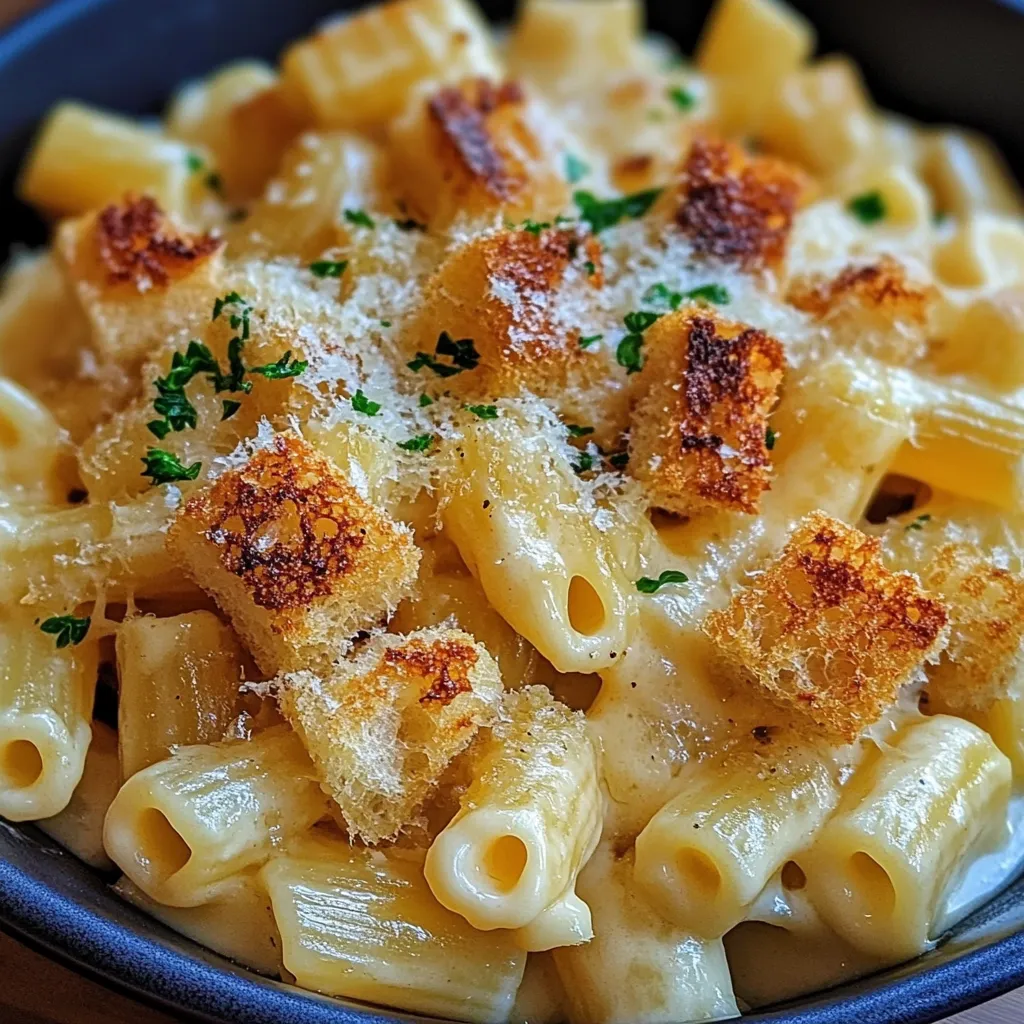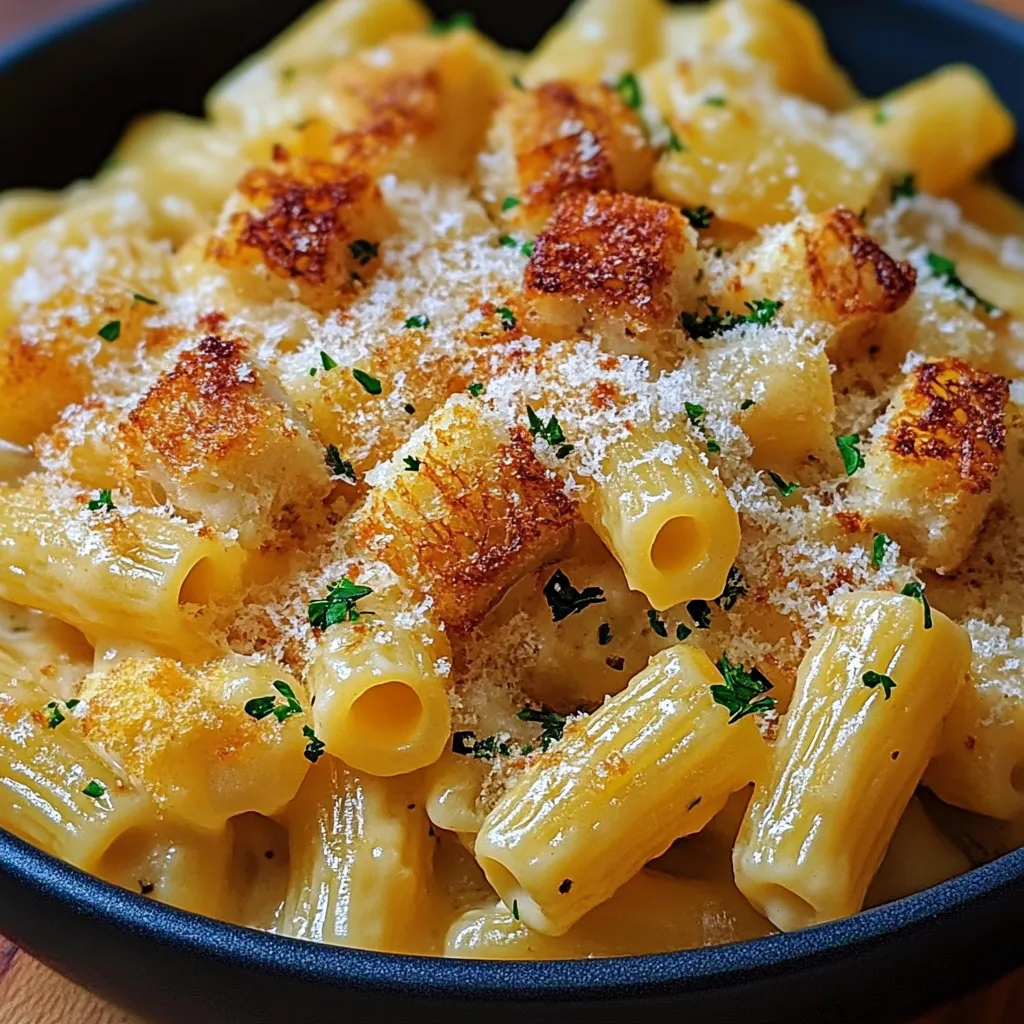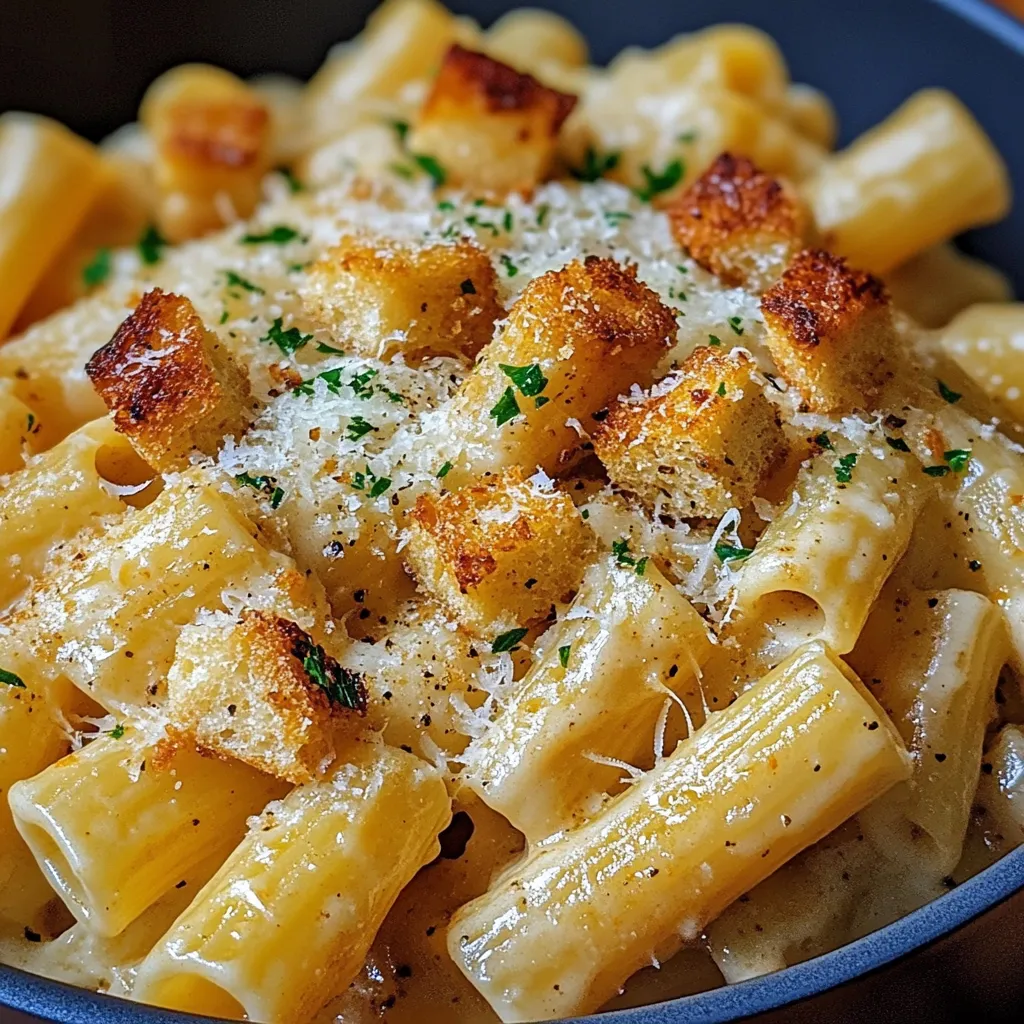 Save
Save
Golden-brown chicken morsels nestle among al dente rigatoni tubes, all enveloped in a silky garlic butter sauce that clings to every ridge and curve. This indulgent pasta dish strikes the perfect balance between comforting simplicity and restaurant-worthy sophistication. The nutty Parmesan melts into the velvety sauce, creating depth that transforms everyday ingredients into something truly extraordinary without requiring advanced culinary techniques.
Last month when my sister visited with her family, I made this dish on a chilly Tuesday evening. The moment I started sautéing the garlic in butter, the entire house filled with an irresistible aroma that drew everyone to the kitchen before dinner was even ready. My ten-year-old nephew, who typically approaches new foods with suspicion, cleaned his plate and asked if we could have it again the following night.
Essential Components
- Rigatoni Pasta: Large tubes with ridged exteriors capture sauce beautifully. Their substantial shape stands up to the chicken pieces while the ridges hold onto the creamy sauce in every bite.
- Chicken Breast: Provides tender, lean protein that absorbs flavors while cooking. Cut into uniform pieces for consistent cooking and maximum surface area for browning.
- Butter: Creates the silky foundation of the sauce. European-style butter contains more butterfat, yielding a richer, more flavorful result than standard varieties.
- Fresh Garlic: Infuses the entire dish with aromatic depth. Mince just before cooking to preserve volatile compounds that deliver maximum flavor.
- Heavy Cream: Transforms the sauce from simple to luxurious. The high fat content ensures a stable sauce that won't separate when simmered with acidic ingredients.
- Parmesan Cheese: Adds complex savory notes and natural thickening power. Freshly grated cheese melts more smoothly than pre-packaged varieties coated with anti-caking agents.
- Chicken Broth: Enhances flavor while adding necessary liquid. The savory depth complements both the chicken and garlic without overwhelming other ingredients.
- Olive Oil: Facilitates proper chicken browning with its higher smoke point. The subtle fruity notes enhance the Mediterranean flavor profile of the finished dish.
- Italian Seasoning: Provides balanced herb flavor throughout the dish. This time-saving blend delivers consistent results without measuring multiple dried herbs.
- Salt and Pepper: Essential foundational seasoning that enhances all other flavors. Kosher salt and freshly ground black pepper provide superior flavor compared to table salt and pre-ground pepper.
Cooking Method
- Pasta Preparation:
- Bring a large pot of generously salted water to a rolling boil over high heat. Add rigatoni and cook until just shy of al dente, typically 8-10 minutes depending on the brand. This slight undercooking allows the pasta to finish cooking in the sauce without becoming mushy. Reserve approximately half a cup of starchy pasta water before draining.
- Chicken Development:
- While pasta cooks, heat olive oil in a large, heavy-bottomed skillet over medium-high heat until shimmering but not smoking. Add bite-sized chicken pieces without overcrowding the pan, working in batches if necessary. Season with salt, pepper, and Italian seasoning, allowing pieces to remain undisturbed for 2-3 minutes to develop a golden crust before stirring.
- Flavor Foundation:
- Remove fully cooked chicken from the pan and set aside. Reduce heat to medium and add butter to the same skillet, allowing it to melt while scraping up browned bits from the chicken. These caramelized remnants contain concentrated flavor that enriches the sauce dramatically.
- Aromatic Infusion:
- Add minced garlic to the melted butter, stirring constantly for approximately 30 seconds until fragrant but not browned. This brief cooking releases essential oils without developing bitterness that can result from garlic scorching.
- Sauce Building:
- Pour chicken broth into the garlic butter mixture, stirring constantly to incorporate all the flavorful bits from the bottom of the pan. Allow liquid to simmer for 1-2 minutes, reducing slightly before moving to the next step.
- Creamy Integration:
- Add heavy cream to the simmering broth mixture, stirring to combine completely. Continue cooking for 3-4 minutes until the sauce begins to thicken slightly, coating the back of a spoon when tested.
- Cheese Incorporation:
- Reduce heat to low before adding freshly grated Parmesan in small handfuls, stirring continuously between additions to ensure smooth melting. This gradual approach prevents the cheese from clumping or creating a grainy texture in the finished sauce.
- Component Combination:
- Return cooked chicken to the sauce, stirring gently to coat each piece. Add drained rigatoni directly to the skillet, tossing thoroughly to ensure sauce penetrates the pasta tubes. If the sauce seems too thick, add reserved pasta water a tablespoon at a time until reaching desired consistency.
 Save
Save
My Italian grandmother always insisted that properly salted pasta water "should taste like the sea" and passed this wisdom to me during our Sunday cooking sessions. The first time I made this dish without adequately salting the water, the entire flavor profile fell flat despite using the exact same ingredients otherwise. Now I never skip this crucial step, understanding that this simple detail fundamentally changes the final result.
Serving Inspirations
This versatile dish creates beautiful harmony with simple sides that complement without competing. A crisp arugula salad dressed with lemon vinaigrette provides refreshing contrast to the rich pasta. For a more substantial meal, serve alongside roasted asparagus or broccolini that can be prepared while the pasta cooks, ensuring everything finishes at the same time.
Creative Variations
This adaptable recipe welcomes numerous interpretations while maintaining its essential character. For bright freshness, stir halved cherry tomatoes into the sauce during the final minutes of cooking. Mushroom lovers might sauté sliced cremini or baby portobello mushrooms before adding the garlic butter. For additional texture, sprinkle toasted panko breadcrumbs over individual servings just before presenting.
Keeping It Fresh
Store leftover pasta in airtight containers in the refrigerator for up to three days, maintaining both flavor and food safety. When reheating, add a splash of milk or cream to restore the sauce's silky texture, warming gently on the stovetop rather than microwaving, which can cause separation. For meal prep convenience, prepare the chicken and sauce separately from the pasta, combining freshly cooked rigatoni with reheated sauce for optimal texture.
 Save
Save
After preparing this dish countless times for family dinners and casual entertaining, I've found this garlic butter chicken with rigatoni represents the perfect balance between impressive results and practical preparation. The combination of tender chicken, perfectly cooked pasta, and silky sauce creates a meal that satisfies deeply without requiring hours in the kitchen. Whether for weeknight family dinners or casual entertaining, this recipe delivers consistent pleasure with minimal effort.
Common Questions About Cooking
- → Can I use a different pasta shape?
- Absolutely! While rigatoni catches the sauce nicely in its ridges and tubes, you can substitute penne, fusilli, or fettuccine with good results.
- → How do I store leftovers?
- Store in an airtight container in the refrigerator for up to 3 days. When reheating, add a splash of milk or cream to loosen the sauce as it tends to thicken when cold.
- → Can I make this dish ahead of time?
- This dish is best served fresh, but you can prepare the chicken and sauce ahead of time, then cook the pasta and combine everything just before serving.
- → What can I serve with this pasta?
- A simple green salad or roasted vegetables make perfect sides. Garlic bread is also delicious for soaking up the extra sauce.
- → Can I use chicken thighs instead of breasts?
- Yes! Boneless, skinless chicken thighs work wonderfully and often stay more tender and juicy than breast meat.
- → Is there a lighter version of this recipe?
- You can substitute half-and-half for the heavy cream and reduce the butter by half, though the sauce won't be quite as rich. Adding more pasta water helps maintain creaminess.
